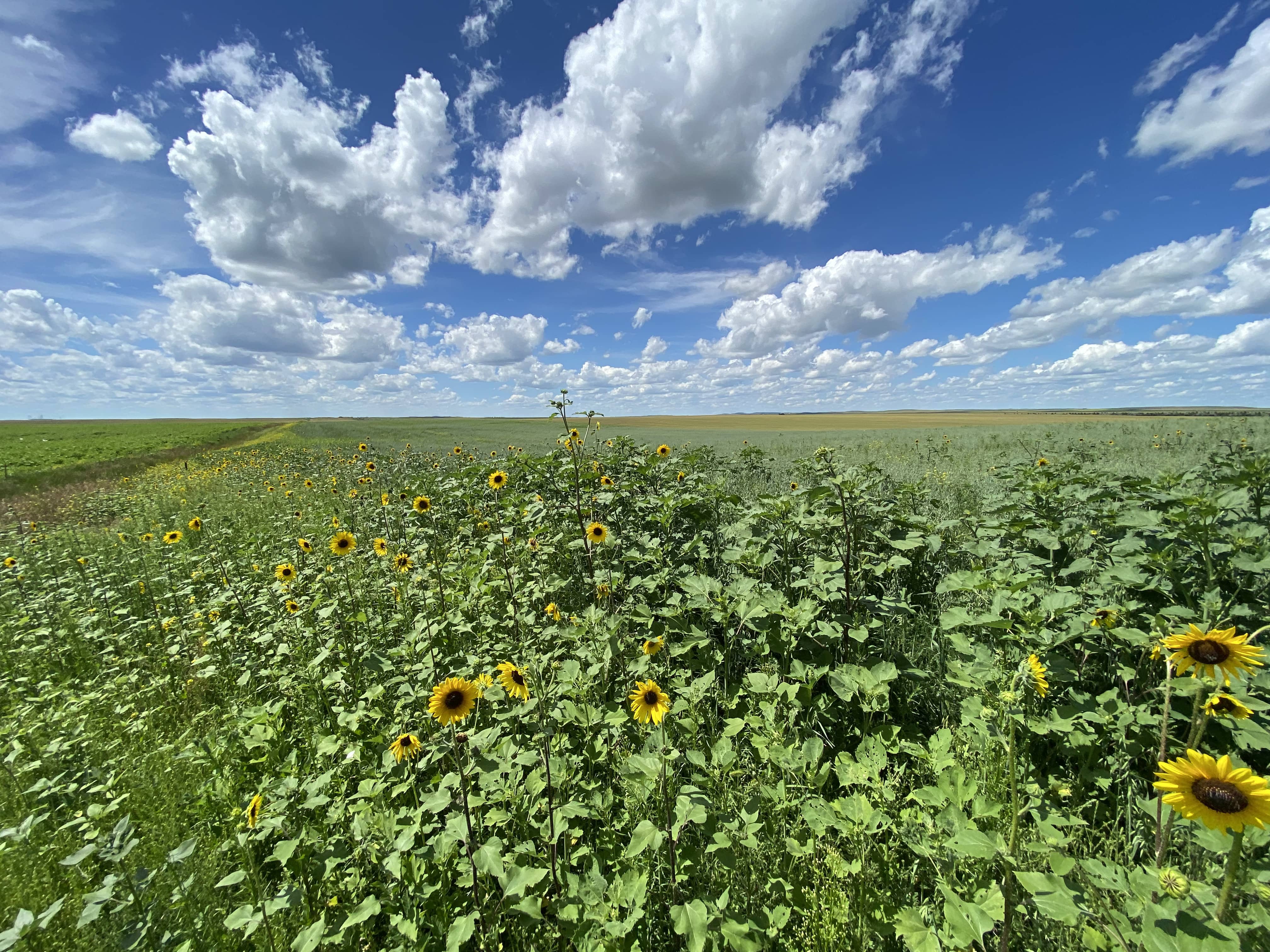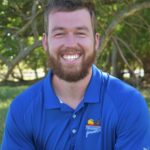
Under the Sun. Plantings established on private land in spring and summer pay off with stronger game populations in the fall, and opportunities for the public. DEO Photo by NDPF.
By Joey Rasco
Sitting here at my desk on a brisk November morning, my mind keeps wandering, day dreaming about flushing pheasants, the whistling wings of a mallard drake, and big rutting bucks. It’s the time we as outdoorsmen and women look forward to all year.
As I snap back to reality, I come across a disturbing statistic, “every 30 seconds in the United States, a swath of nature the size of a football field is lost to development.” Whether you consider yourself a conservationist or not, you too should find that concerning.
Aldo Leopold once said, “conservation will ultimately boil down to rewarding the private landowner who conserves the public interest.” Almost 90 years later those words ring truer than ever. In the United States, around 60 percent of all land is privately owned. In North Dakota it’s over 93 percent. Although wildlife is considered a public resource, simply by looking at the numbers, it shows us that private landowners are providing much of the habitat for our wildlife. As conservationists that tells us one thing, in order to have a significant impact on the landscape much of the work is going to have to be done on private lands.
As an employee of “The Habitat Organization”, my goal when working with landowners is to help them identify areas of opportunity to create habitat, provide technical assistance to improve existing habitat, and find conservation programs that will assist them in their work and provide some type of return on investment. Whether that be a program within the Farm Bill, like the Conservation Reserve Program, or utilizing one of the cost-share programs available through Pheasants Forever and the Outdoor Heritage Fund or through one of our many partners. By providing an incentive, it not only rewards the landowner for their work, but also helps to create wildlife habitat in areas where it may not have been possible without that funding source -a win-win in my book.
While in recent years our public lands have been getting a lot of headlines, and for good reason, let’s not forget to take the time to thank the private landowners who are working diligently to create habitat and have a positive impact on the landscape. Private landowners play an extremely pivotal role when it comes to creating and connecting wildlife habitat on the landscape. Whether it’s someone planting pollinator habitat on the back 40 or a farmer enrolling marginal acres into a conservation program, we owe it to these folks for the work they do. An even bigger thanks should go out to those landowners who allow others to enjoy the fruits of their labor. Taking family and friends out for a hunt or enrolling their land into the PLOTS program may be one of the most selfless things a landowner could do in my book.
As you are making memories in the field this year, whether on private land or public land, I would encourage you to stop and think about the conservation efforts it took to get here and how we need to continue to support private land conservation efforts going forward. At the end of the day, I think we all have the same goal: to have places to enjoy the great outdoors with an abundance of wild game to chase. It isn’t just the Game and Fish Department’s job or Pheasants Forever’s job to provide that. We all play a vital role.
If you are interested in learning more about private land conservation, ways you can improve habitat on your property, or how you can support conservation, I would encourage you to reach out to me or one of the North Dakota Pheasants Forever staff.
 Joey Rasco is a Dakota Edge Outdoors contributing writer and Precision Ag & Conservation Specialist for North Dakota Pheasants Forever.
Joey Rasco is a Dakota Edge Outdoors contributing writer and Precision Ag & Conservation Specialist for North Dakota Pheasants Forever.
